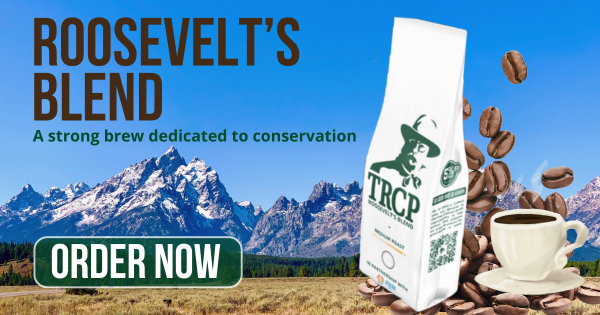My husband Neil and I take a lot of vacation photos. Most of them are pretty typical: a smiling couple, breathtaking scenery, a group of friends around a campfire. Less typically, some feature one or both of us with a dead animal.
You see, we are hunters. While other couples are taking the kids to Disneyland or relaxing on a beach, we spend the summer eagerly anticipating September, that magical month when hunting seasons are open in the Rocky Mountain West. It is no exaggeration to say that as an archer who does not participate in rifle seasons later in the year, Neil lives for September.
Often referred to as “hero shots”, sportsmen commonly take pictures of themselves and their quarry at the conclusion of a successful hunt. The concept is not new; people have been taking hero shots since photography was invented. What has changed is how we share these pictures. Until recently, the people most likely to see a hunter’s photos were those close to him who, for the most part, understood why the picture was taken.
However with the emergence of digital technology and social networking sites that allow anyone to instantly email or post pictures on the internet, today’s hunters are facing new ethical questions regarding the images they share. The reaction of a non-hunter to having one of these pictures show up unexpectedly on their computer screen is often as predictable as it is inaccurate – that the pictures are gruesome, perhaps even disgusting, and that the hunter is an insensitive braggart flaunting his or her bloodlust.
Neil and I take these so-called “deadhead” or “grip & grin” pictures because they are an important part of our vacation memories. As the image of someone’s toddler with Mickey Mouse reminds them of a day spent at the magical kingdom, so our pictures remind us of our time spent in the great outdoors, and the many wonderful experiences we shared before, during and after the hunt.
And while this may seem like a contradiction, we take pictures out of respect for the animal. They illustrate the brief moment in time when we experience both gratitude for the sustenance it will provide, and humility at the magnitude of the decision we made when we chose to end its life. We take a picture of every animal, whether it’s an antelope doe, spike bull elk or giant bighorn ram. One is no more or less deserving of respect than another according to the presence or size of antlers, horns, or any other trophy quality. The smiles you see in our pictures reflect many things – from pride at successfully putting hunting skills developed and honed over many years to use, to the knowledge that we have provided food for our own table. But never, ever, do they imply a joy in death.
When we have spent days or weeks on a hunt, capturing the memory is well worth a few extra minutes to thoughtfully compose a photo. We take the time to position the animal in its natural setting and clean up any excess blood before pulling out a camera. Nothing is more cringe-inducing to me as a hunter than seeing a picture of a dead deer laying in the back of a pickup, legs splayed, tongue hanging out and blood pooling on the tailgate. Is that scenario going to happen as you travel home from your hunt? Perhaps, but that is not the moment to preserve or publicize.
Some will disagree, arguing that they have nothing to hide and that anyone who does not appreciate their pictures can choose not to look at them. I maintain that there is a distinction between hiding your pictures and not rubbing people’s noses with them. There is a difference between a private email to a friend or a post on a hunting website and uploading an image that is going to appear on your vegetarian Aunt Susan’s Facebook page. This goes back to the respect issue, in this case respect for your audience. Every hunter must be cognizant of the fact that we are ambassadors for our sport, whether we choose to be or not, and that it’s not just like-minded individuals who see our pictures when they are made public.
My husband and I have our “hero shots” framed in the hallway of our home and in a private online album shared with hunting friends. Collectively, they reflect a lifetime’s passion for wild things and wild places. We often look through them, and I am always struck by the same thought – killing a deer, elk or any other game does not make you a hero – it makes you a hunter.








This was a well written, and well thought out article. While I seldom hunt these days due to lack of opportunity, I have the same type of photos mentioned in this article, The author in this well reasoned piece, is quite right to encourage those of us in the hunting and fishing world to be judicious in the types of photos we take. There are plenty of folks who would take your photos out of their context and use it as a placard to dishonor hunting, and there by those that hunt.
Thanks to TRCP for running such a good piece.
Thanks Beau!